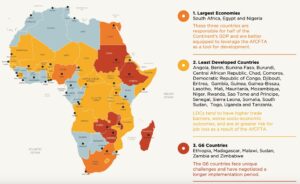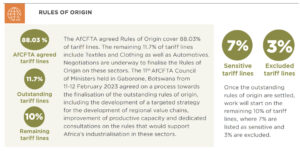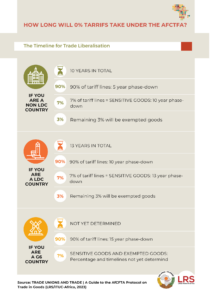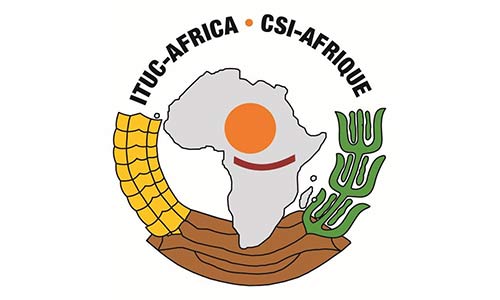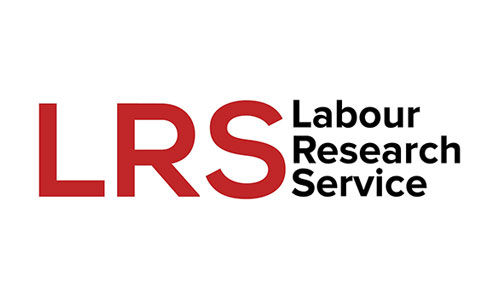The Protocol on Trade in Goods aims to create a liberalised market for trade in goods in line with Article 3 of the African Continental Free Trade Area (AfCFTA) agreement.
The Protocol on Trade in Goods has no labour provisions, which is of concern to trade unions given the direct link between labour and the production and trade of goods and the impact of trade liberalisation on workers. Trade unions can play an important role in the review process, shaping future iterations of the AfCFTA and ensuring the inclusion of labour provisions.
Although the Protocol on Trade in Goods is already in force, two critical elements are still being negotiated. Trade unions therefore have an opportunity to influence the Protocol.
Trade unions have an opportunity to share their experiences, advocate for their rights and build a continental voice that cannot be ignored by policy makers.
Source: A Guide to the AfCFTA Protocol on Trade in Goods (LRS/ITUC, 2022)
What questions should trade unions be asking?
As representatives of the working class, trade unions want to be effective advocates, lobbyists and monitors of the Protocol on Trade in Goods. The following eight questions can help trade unions prepare for their role in integrating labour provisions into the Protocol on Trade in Goods.
- Is my country an LDC or a G6 countryLeast Developed Countries: Least Developed Countries (LDCs) are low-income countries facing severe structural impediments to sustainable development. Allowing for LDCs in the AfCFTA is a way of recognising the differences between countries. There is a financial cushion for LDCs in the form of a longer period for the implementation of the removal of their trade barriers. However, for the intervention to be successful, effective measures must be taken to support local workers, farmers and small businesses.G6 countries: The AfCFTA recognises a group of six member states (Ethiopia, Madagascar, Malawi, Sudan, Zambia and Zimbabwe) that face specific development challenges and will need more time to remove trade barriers.
G6 countries (which include five LDCs) have 15 years to reduce their tariffs, compared to ten years for other LDCs and five years for all other countries.
Classifying countries under the AfCFTA

Source: A Guide to the AfCFTA Protocol on Trade in Goods (LRS/ITUC, 2022)
- What tariffs will be reduced?

3. Are these products locally produced and what will be the impact on jobs?
4. What tariffs should be retained to protect local industries and jobs?
5. Should some products receive smaller tariff cuts or longer implementation periods?
6. Is my country’s implementation period sufficient to protect workers and the economy?
7. Which products are considered as sensitive or exempted and do we agree?
8. Will the proposed tariff cuts in any way prevent my country from developing and implementing policies aimed at decent work, food security, access to quality public services, poverty reduction and equal income distribution?
Essential Resource: A Guide to the AfCFTA Protocol on Trade in Goods
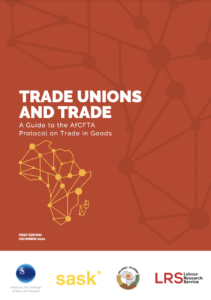
Marie Daniel
Marie Daniel is an Associate at Labour Research Service. Marie has an urban studies and development economics background and one of her research passions is organisation and participation approaches within the informal sector. She is intrigued by the manner in which participatory democracy is approached and implemented in South Africa.

